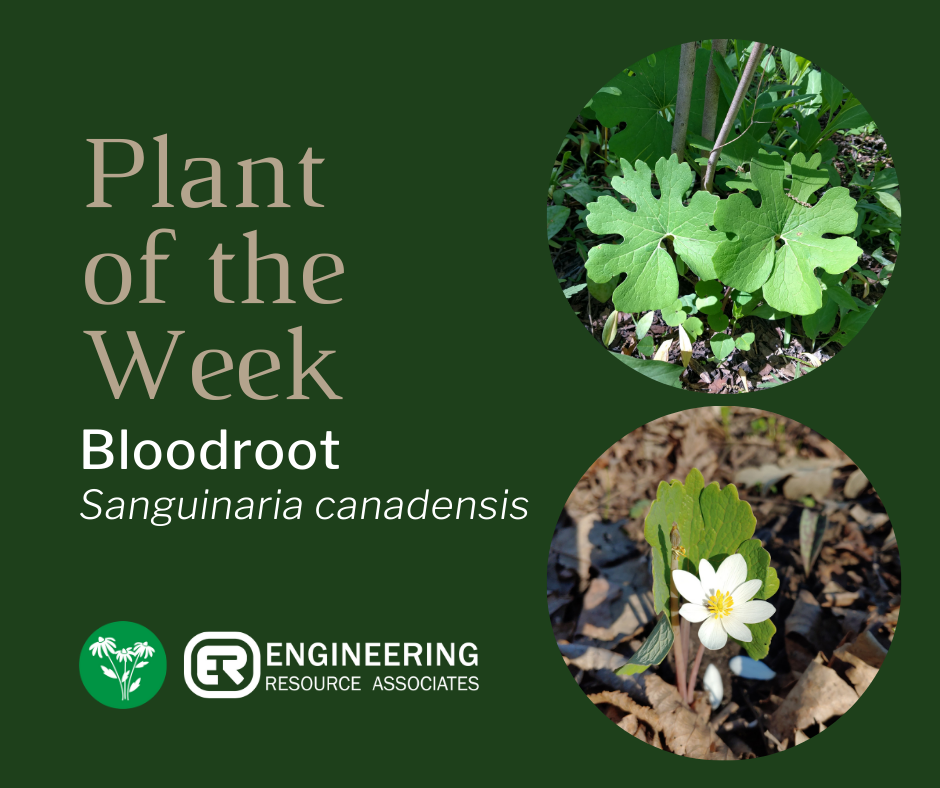Sanguinaria canadensis
A member of the poppy family, the native Bloodroot is not only a beautiful spring wildflower highly coveted by native plant gardeners, but it is also an important food source for early emerging pollinators in woodland habitat. The common name “Bloodroot” comes from the red juice that is concentrated in the roots and stems. The juice was used by Native American tribes as a dye and is also known to have antibacterial properties.
Emerging as early as the first week of April, the plant takes advantage of the early spring sunshine before surrounding trees have begun to leaf out and shade the ground. The first notable feature is an attractive, white, daisy-like flower before unfurling a large compound-lobed singular leaf that will persist through summer. This early emerging flower is joined by other spring wildflowers—Spring Beauty, Trillium, Mayapple, and Trout Lilies—in serving such animals as the federally endangered Rusty-Patched Bumblebee, who emerge from burrows in the ground before many common plants have begun to show signs of growth for the year.
This plant is native to most of Illinois and can be found in woodland habitats that have not succumbed to overgrowth of Buckthorn and Honeysuckle, which shade the ground and prevent the sun from warming the soil to signal Bloodroot to begin growth for the season. The plant spreads though underground rhizomes and a method of seed dispersal called ‘Myrmecochory’, seed dispersal by ants. Ants are a common method of seed dispersal for woodland flowers as wind speeds are slowed by the canopy. This is achieved through a fleshy appendage on the seed known as an ‘Elaiosome’ which may appear in the form of a small translucent hat on the seed. The seeds are then taken into ant hills where they await germination in the coming years.
Those in the Chicagoland Suburbs may find bloodroot blooming at such locations as John J. Duerr Forest Preserve in St. Charles, Bliss Woods in Sugar Grove, Lyman Woods in Downers Grove, and several other local forest preserves.


 RSS Feed
RSS Feed